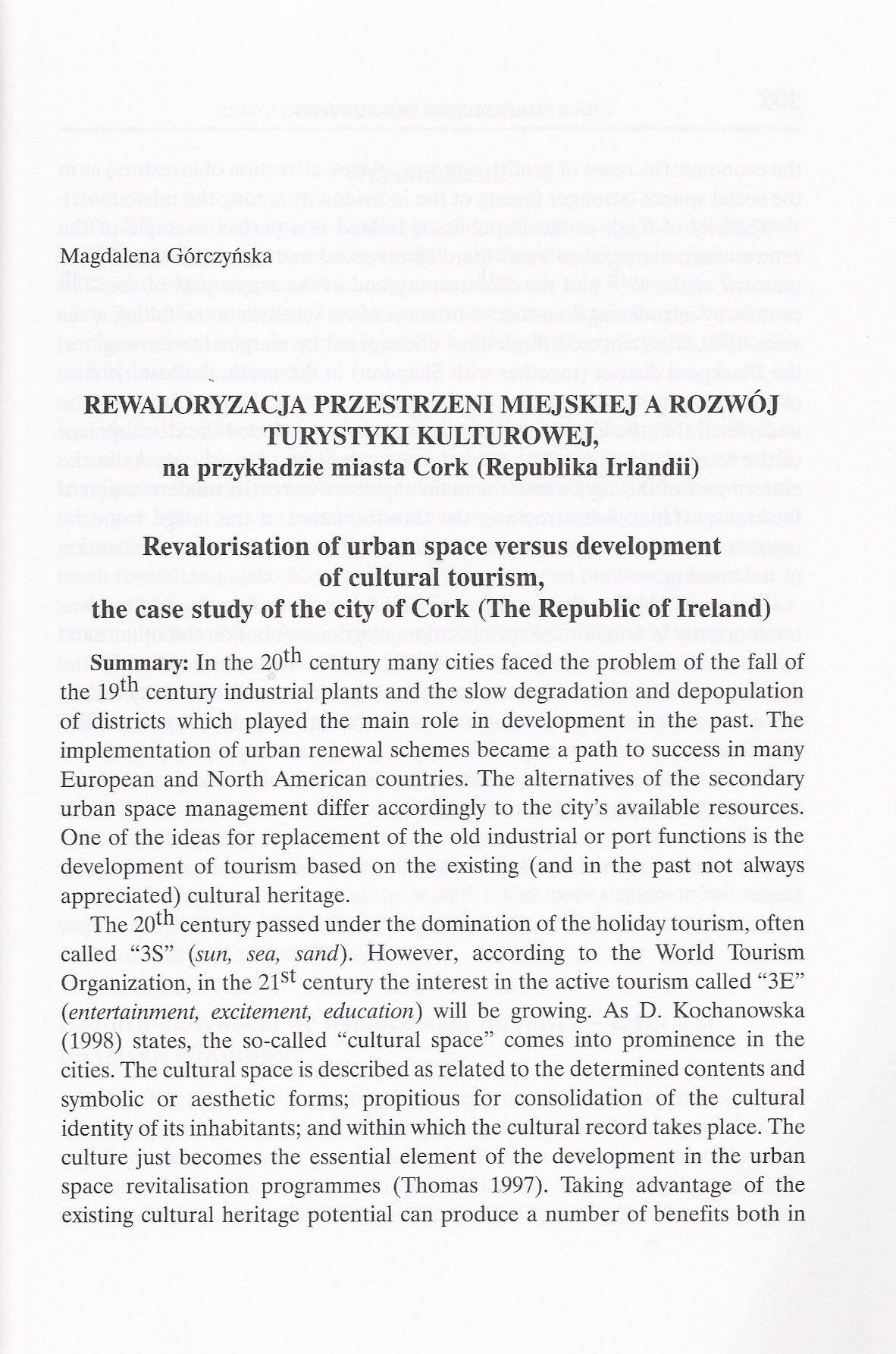skanuj0078 (21)

Magdalena Gorczyńska
REWALORYZACJA PRZESTRZENI MIEJSKIEJ A ROZWÓJ TURYSTYKI KULTUROWEJ, na przykładzie miasta Cork (Republika Irlandii)
Reyalorisation of urban space yersus development of cultural tourism,
the case study of the city of Cork (The Republic of Ireland)
Summary: In the 20™ century many cities faced the problem of the fali of the 19™ century industrial plants and the slow degradation and depopulation of districts which played the main role in development in the past. The implementation of urban renewal schemes became a path to success in many European and North American countries. The alternatives of the secondary urban space management differ accordingly to the city’s available resources. One of the ideas for replacement of the old industrial or port functions is the development of tourism based on the existing (and in the past not always appreciated) cultural heritage.
The 20^ century passed under the domination of the holiday tourism, often called “3S” (sun, sea, sand). However, according to the World Tourism Organization, in the 21st century the interest in the active tourism called “3E” (entertainment, excitement, education) will be growing. As D. Kochanowska (1998) States, the so-called “cultural space” comes into prominence in the cities. The cultural space is described as related to the determined contents and symbolic or aesthetic forms; propitious for consolidation of the cultural identity of its inhabitants; and within which the cultural record takes place. The culture just becomes the essential element of the development in the urban space revitalisation programmes (Thomas 1997). Taking advantage of the existing cultural heritage potential can produce a number of benefits both in
Wyszukiwarka
Podobne podstrony:
skanuj0088 (22) 209 REWALORYZACJA PRZESTRZENI MIEJSKIEJ wizerunku „miasta-kultury”. Wybrany w danym
50613 skanuj0090 (21) REWALORYZACJA PRZESTRZENI MIEJSKIEJ 211 Po raz kolejny o znaczeniu dziedzictwa
skanuj0084 (21) 205 REWALORYZACJA PRZESTRZENI MIEJSKIEJ trzymujący się na nocleg w danym mieście2. J
skanuj0080 (20) 201 REWALORYZACJA PRZESTRZENI MIEJSKIEJWprowadzenie W XX w. wiele miast stanęło prze
więcej podobnych podstron